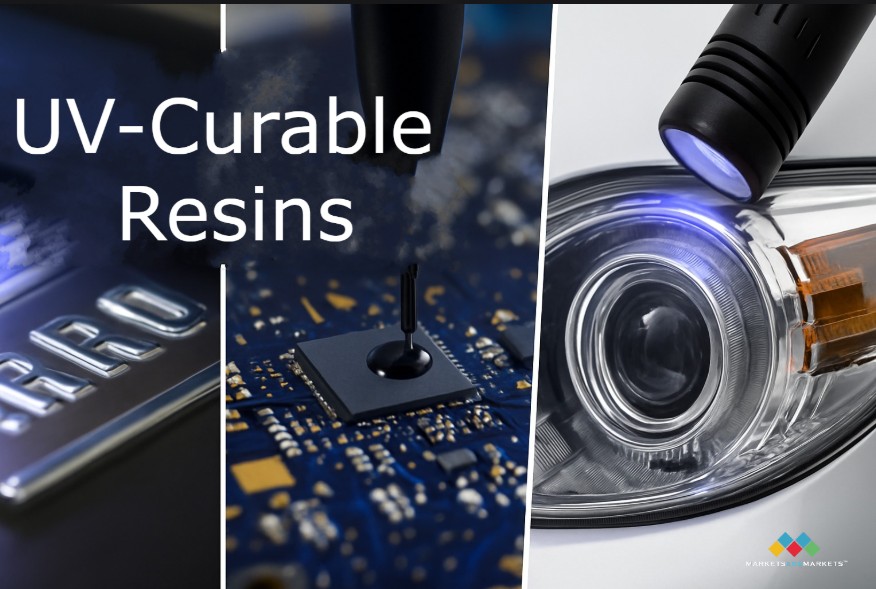
The UV-curable resins market is experiencing significant growth, driven by increasing demand for eco-friendly, high-performance materials across various industries. Projected to reach USD 9.31 billion by 2029, up from USD 6.48 billion in 2024, the market is expanding at a CAGR of 7.5% .
Composition Analysis: Oligomers, Monomers, Photoinitiators, and Additives
The market’s composition is segmented into oligomers, monomers, photoinitiators, and additives.
- Oligomers: Holding the largest share, oligomers are favored for their superior properties, including fast curing, chemical resistance, and durability. They are extensively used in coatings and adhesives .
- Monomers: Monomers are crucial for adjusting the viscosity and flexibility of UV-curable formulations. They play a significant role in tailoring resins for specific applications
- Photoinitiators: These compounds initiate the polymerization process upon UV exposure. Innovations in photoinitiator technology are enhancing curing efficiency and expanding application scopes .
- Additives: The additives segment is expected to witness the highest growth rate, as they enhance properties like adhesion, flexibility, and environmental resistance, meeting the specific needs of various end-use industries .
Chemistry Insights: Acrylate and Non-Acrylated Oligomers
UV-curable resins are categorized based on chemistry into acrylate oligomers and non-acrylated oligoamines.
- Acrylate Oligomers: These are widely used due to their rapid curing and strong mechanical properties. They are prevalent in applications requiring high durability and resistance .
- Non-Acrylated Oligoamines: Although currently holding a smaller market share, non-acrylated oligoamines are gaining attention for their potential in applications requiring enhanced adhesion and reduced shrinkage during curing .
Application Spectrum: Coatings, Inks, Adhesives, and 3D Printing
UV-curable resins find applications across various sectors:
- Coatings: Dominating the application segment, UV-curable coatings are valued for their durability, chemical resistance, and environmental friendliness. They are extensively used in wood finishes, automotive parts, and industrial equipment .
- Printing Inks: The demand for UV-curable inks is rising in the packaging and publishing industries due to their quick drying times and superior print quality .
- Adhesives: UV-curable adhesives offer strong bonding and fast curing, making them ideal for electronics, medical devices, and automotive assemblies .
- 3D Printing: The growth of additive manufacturing has spurred the use of UV-curable resins in 3D printing, providing high-resolution and durable prototypes .
Technological Advancements: Waterborne UV Resins
Emerging technologies like waterborne UV resins are gaining traction due to their low VOC emissions and ease of application. These resins are increasingly adopted in industries aiming for sustainable and environmentally friendly solutions .
End-Use Industry Dynamics
The adoption of UV-curable resins spans multiple industries:
- Industrial Coatings: Accounting for over 57% of the market share, driven by regulations limiting solvent emissions and the need for durable finishes .
- Graphic Arts: The demand for high-quality, fast-curing inks is propelling growth in this sector .
- Electronics: UV-curable resins are essential for encapsulating and protecting sensitive electronic components .
Regional Outlook: Asia-Pacific Leading the Charge
The Asia-Pacific region is the fastest-growing market for UV-curable resins, attributed to rapid industrialization, urbanization, and stringent environmental regulations. Countries like China, Japan, and India are at the forefront, with significant investments in manufacturing and infrastructure .
Download PDF Brochure :
The UV-curable resins market is poised for robust growth, driven by technological advancements and increasing environmental awareness. However, challenges such as limited substrate compatibility and the need for specialized curing equipment may hinder widespread adoption. Ongoing research and development efforts aim to overcome these barriers, expanding the applicability of UV-curable resins across diverse industries


